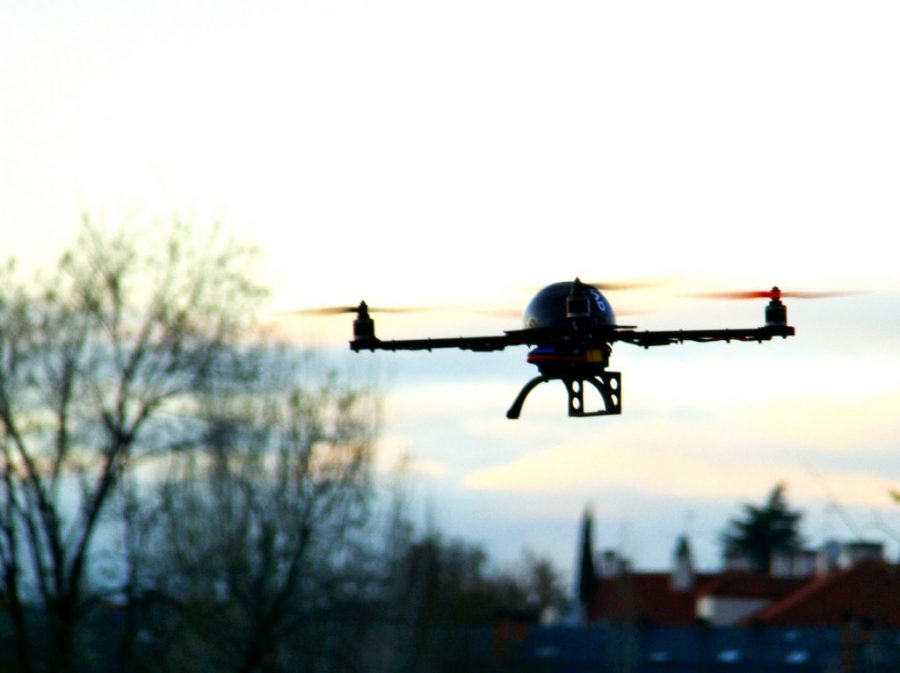WNYU: Policing tech: Drone usage in the NYPD
November 11, 2021
Editor’s Note: This article is a full transcript of the segment from The Rundown, which has been lightly edited for format and consistency. Thank you to WNYU for the collaboration!
The NYPD, along with other police departments across the country, have come under intense scrutiny for their use of drones. While drones are supposed to be used for security and surveillance purposes, many people are raising concerns over privacy violations. Muna Khalidi, Lyssia Gingins and Sachin Sundar interview Max Isaacs, a staff attorney specializing in policing tech at NYU Law Policing Project, for more insight into this issue.
SUNDAR: For the rundown on 89.1 FM, this is Sachin Sundar,
KHALIDI: Muna Khalidi,
GINGINS: and Lyssia Gingins.
SUNDAR: Police departments across the country have begun to use unmanned aerial vehicles, better known as drones. The New York City Police Department unveiled its first drone program in 2018.
GINGINS: In a press release, the NYPD specified that the drones would be used for search and rescue missions and crime scene documentation, among other uses. The press release stated that the drones would not be used as weapons or to conduct searches without warrants.
KHALIDI: However, the use of drones by both the NYPD, and police departments nationwide, has come under increasing scrutiny. An Intercept article from last month detailed the NYPD’s alleged use of drones manufactured by the Chinese-based company Da-Jiang Innovations or DJI, U.S. government officials have been vocal about their opposition to the use of DJI drones by law enforcement, calling it a national security threat that would put law enforcement data at risk.
SUNDAR: For more insight on this topic, we interviewed Max Isaacs, a staff attorney at the NYU School of Law’s policing project. Isaacs, who specializes in policing tech, spoke to us about the benefits of the NYPD’s use of drones, as well as concerns and criticisms surrounding its use.
ISAACS: The idea behind police use of drones is that sometimes you want to create distance between officers and a suspect. It’s a matter of officer safety. So you might have a standoff situation. And you might want to use a drone to get a better vantage point to locate a suspect without putting an officer in harm’s way.
GINGINS: Despite this, many people are questioning why police departments like the NYPD are using drones in the first place. Activist groups have raised concerns over privacy violations and whether drone surveillance, especially at large public events such as protests, can be considered as an encroachment on the civil liberties of the people.
ISAACS: People are concerned about facial recognition, and facial recognition can be used in a lot of different contexts. One is to track people, to track their location, whether they went to a gay bar or whether they went to a church or to an abortion clinic. We don’t expect police to be able to surveil us in this way, so it raises a litany of really important civil liberties questions. As a starting point for thinking through these problems, what is needed is full transparency about where police deploy technologies.
KHALIDI: So what are the consequences of this lack of accountability around drone usage, and how are people of color disproportionately affected?
ISAACS: Often these new technologies are not deployed equitably. They tend to be concentrated in Black and brown communities. The other thing that I’ll note is that aerial surveillance often is used in conjunction with protests. We’ve really seen a trend in police using drones and using aerial surveillance helicopters to monitor protests that can actually deter people from going out and exercising their constitutional rights. So that’s a big problem.
SUNDAR: Isaacs also discussed the overall lack of regulation on police drones and other surveillance technologies.
ISAACS: Constitutional law has largely failed to rein in the excesses of police surveillance. And because these technologies are deployed in public, the Supreme Court has said that police generally don’t need a warrant in order to conduct this type of surveillance. This issue that I’ve identified, of basically, the lack of legislation or any real regulation of policing, that [issue] isn’t confined to police surveillance — that is an issue with policing in general. And I think what you’ve seen over the past year or two is a real awakening among the public. One of the big problems stands in the way of regulation is what we call the information gap, which is– the communities just really don’t understand the technologies and how they’re being used. The policing project is engaged in a lot of efforts to facilitate policy making around policing technology. It is our responsibility as concerned citizens and as members of a democracy to push our legislators, to push our lawmakers to implement common-sense regulations, common-sense measures to try to constrain some of the worst police abuses we’ve seen over the past few years.
KHALIDI: The debate around drones raises important questions about the future of surveillance technologies and potential implications on our civil liberties. We’ll have to see how increasing public scrutiny will affect policymaking on policing tech in the years to come.
SUNDAR: For The Rundown on 89.1 FM, this has been Sachin Sundar,
KHALIDI: Muna Khalidi,
GINGINS: and Lyssia Gingins
























































































































































